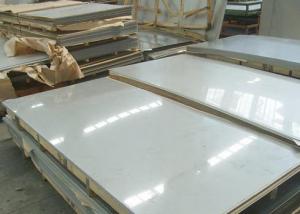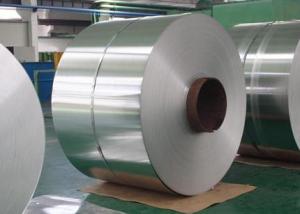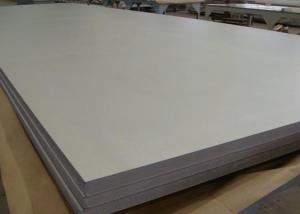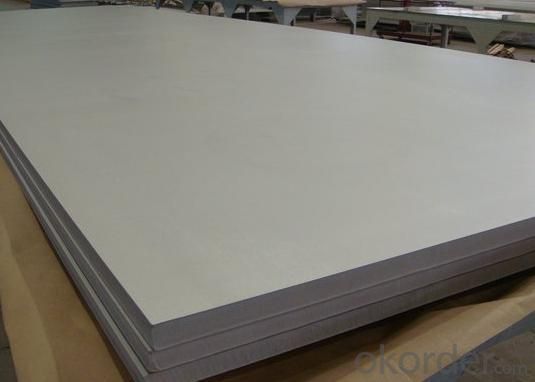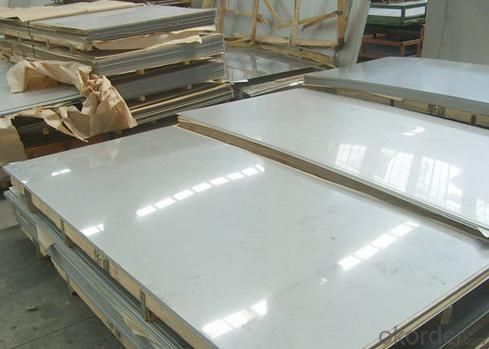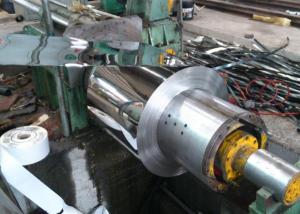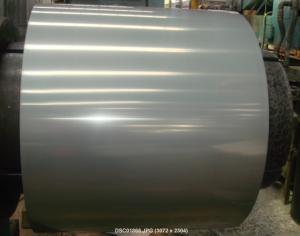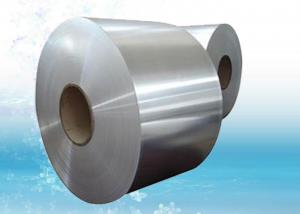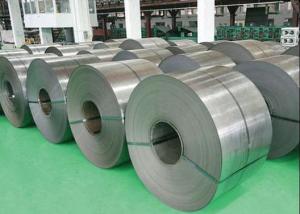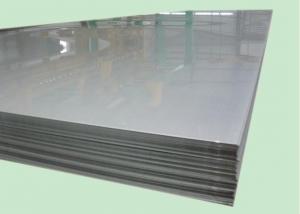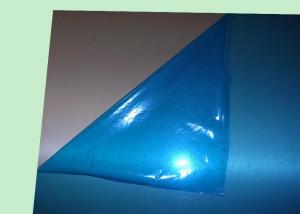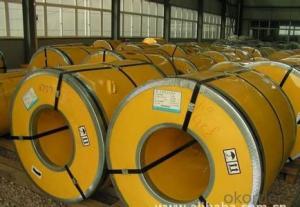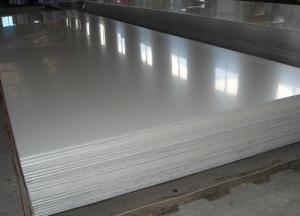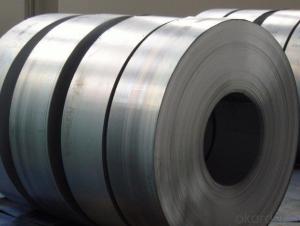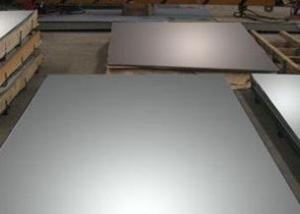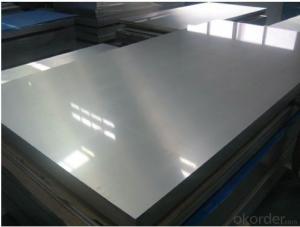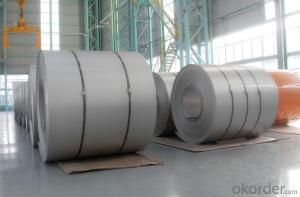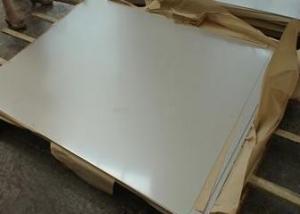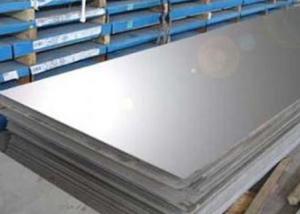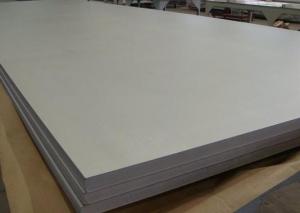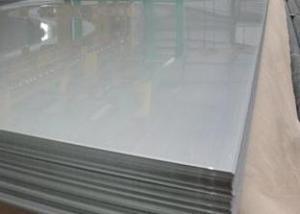444 Stainless Steel Sheet
- Loading Port:
- China Main Port
- Payment Terms:
- TT or LC
- Min Order Qty:
- 1 Ton m.t.
- Supply Capability:
- 1000 Tons Per Month m.t./month
OKorder Service Pledge
OKorder Financial Service
You Might Also Like
444 Stainless steel sheet
1. Chemical composition
|
C |
Si |
Mn |
P |
S |
Ni |
Cr |
|
max0.025 |
max1.00 |
max1.00 |
max0.04 |
max0.03 |
--- |
17.00-20.00 |
2. Mechanical properties
|
Yield Strength |
Tensile |
Elongation |
Hardness (HV) |
Hardness (HRB) |
|
≥245 |
≥410 |
≥20 |
≤230 |
≤96 |
3. Standard: AISI, ASTM, GB, EN, DIN, JIS
4. Surface: 2B, NO.1, BA, NO.4, Hairline, SB, Mirror finish, Anti-skid, Cherkered etc.
5. Size: Thickness: 0.3-3mm (cold rolled), 3-40mm (hot rolled)
Width: 1000mm or 1219mm or 1240mm for cold rolled, 1500mm for hot rolled.
Length: As customers' request.
6. MOQ: 1 Ton
7. Payment terms: T/T or L/C
8. Packing: Seaworthy package with wooden or Iron pallets with the paper and the steel strip, or as customers' request.
9. Delivery time: Usually about 7 days after we confirming the order, or according to your quantity.
If you have any question or demand, pls feel free to contact me.
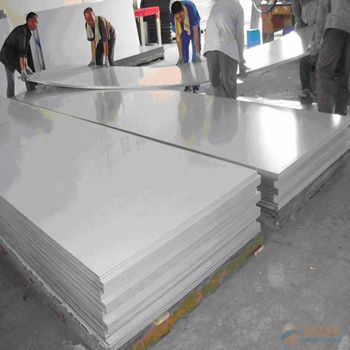
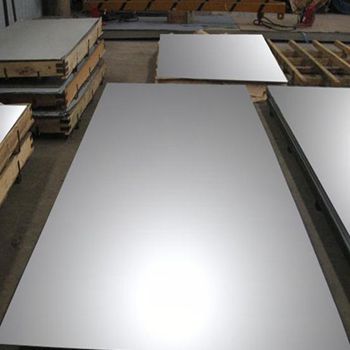

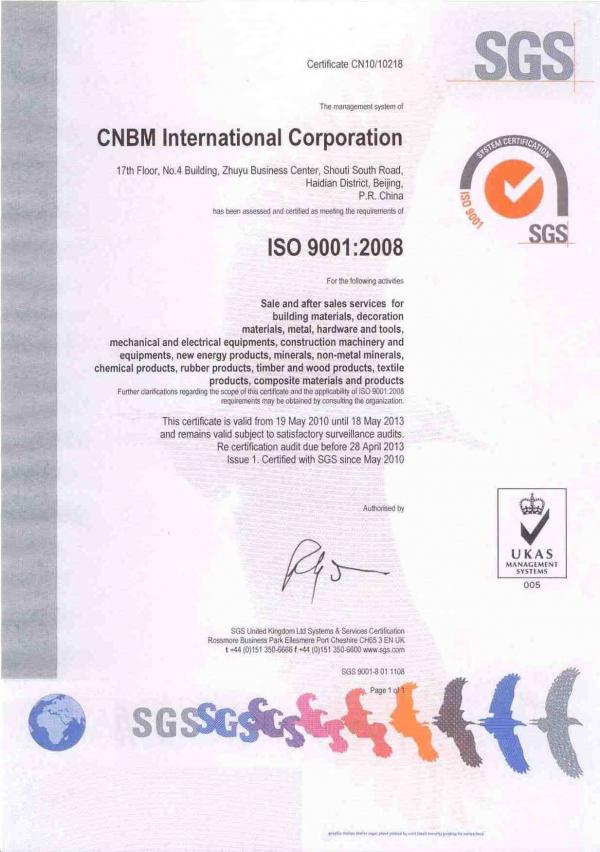
- Q: What are the standard dimensions of stainless steel strips?
- The specific application and industry requirements can cause the dimensions of stainless steel strips to vary. Nonetheless, there are commonly used standard dimensions. Stainless steel strips are typically available in a range of widths, from 0.025 inches to 24 inches. The thickness of these strips can vary from 0.001 inches to 0.1875 inches. Lengths can also differ, but standard lengths are commonly found in coils or rolls that can reach up to 100 feet. It is worth mentioning that these dimensions are adjustable and can be tailored to suit the project or application's specific needs.
- Q: How do stainless steel strips handle exposure to chlorine?
- Stainless steel strips possess an exceptional ability to withstand corrosion and effectively endure chlorine exposure. Given that chlorine is an exceedingly reactive element capable of inducing corrosion in numerous metals, stainless steel sets itself apart by containing a substantial quantity of chromium. This chromium content enables the formation of a protective oxide layer on the surface of the stainless steel, acting as a formidable barrier that thwarts chlorine from accessing the underlying metal. Consequently, the stainless steel strip remains shielded from corrosion. Furthermore, stainless steel boasts the presence of additional alloying elements such as nickel and molybdenum, which further bolster its corrosion resistance in chlorine-rich surroundings. All in all, stainless steel strips emerge as an outstanding choice for applications involving chlorine exposure, as they retain their strength and integrity even in the harshest conditions.
- Q: Are stainless steel strips resistant to pitting?
- Generally, stainless steel strips exhibit resistance to pitting. Pitting corrosion refers to a localized type of corrosion that leads to the formation of small holes or pits on the surface of metals, including stainless steel. Nevertheless, stainless steel possesses a high resistance to pitting owing to its chromium content. The presence of chromium results in the development of a passive protective layer on the surface of stainless steel, thereby aiding in the prevention of metal corrosion. Moreover, stainless steel is frequently alloyed with other elements like molybdenum and nickel, which further augment its resistance to pitting corrosion. Consequently, stainless steel strips find widespread usage in industries where corrosion resistance plays a vital role, such as construction, automotive, and food processing.
- Q: Are stainless steel strips resistant to erosion?
- Yes, stainless steel strips are highly resistant to erosion. Stainless steel is an alloy composed of iron, chromium, and other elements that provide excellent corrosion resistance properties. The chromium content in stainless steel forms a protective passive layer on its surface, preventing the metal from reacting with the surrounding environment. Consequently, stainless steel strips are highly resistant to erosion caused by chemical reactions, moisture, and exposure to various atmospheric conditions. This makes them suitable for various applications where erosion resistance is crucial, such as in marine environments, chemical processing plants, and outdoor structures exposed to harsh weather conditions.
- Q: What is the electrical resistivity of stainless steel strips?
- The electrical resistivity of stainless steel strips can vary depending on the specific grade and alloy composition. However, generally speaking, stainless steel is known to have a relatively high resistivity compared to other metals. The resistivity of stainless steel strips typically ranges from 70 to 72 micro-ohm centimeters (µΩ·cm) at room temperature. This higher resistivity is due to the presence of chromium and other alloying elements in stainless steel, which contribute to its corrosion resistance and mechanical properties. It is worth noting that resistivity can also be affected by factors such as temperature, impurities, and processing conditions, so precise values may vary in different scenarios.
- Q: What are the factors affecting the strength of 111 stainless steel strips?
- The factors affecting the strength of 111 stainless steel strips include the composition of the steel, the manufacturing process, the temperature and time of heat treatment, the amount and distribution of impurities, the presence of strain hardening, and the thickness of the strips.
- Q: Are 111 stainless steel strips suitable for desalination plants?
- Desalination plants find 111 stainless steel strips to be a suitable option. This is because stainless steel is a commonly used material in such plants, thanks to its exceptional resistance to corrosion. Specifically, the 111 stainless steel grade, also known as AISI 316L, proves to be highly compatible with desalination plants due to its ability to withstand corrosion in chloride-rich environments. Additionally, this grade of stainless steel demonstrates remarkable resistance against both pitting and crevice corrosion, which are prevalent issues in desalination plants due to the presence of saltwater. Moreover, the strength and durability of 111 stainless steel strips are commendable, rendering them appropriate for the challenging operating conditions of desalination plants. Consequently, the corrosion resistance, strength, and durability of 111 stainless steel strips collectively establish them as a reliable and appropriate choice for desalination plants.
- Q: Are stainless steel strips flexible?
- Yes, stainless steel strips can be flexible depending on their thickness and width. Thinner and narrower stainless steel strips tend to be more flexible, while thicker and wider ones may have limited flexibility.
- Q: Can stainless steel strips be used in automotive industries?
- Yes, stainless steel strips can be used in automotive industries. Stainless steel is known for its excellent corrosion resistance, high strength, and durability, making it a suitable material for various automotive applications. Stainless steel strips are commonly used in the manufacturing of automotive components such as exhaust systems, trim, body panels, brackets, and reinforcements. They offer resistance to heat, chemicals, and wear, making them ideal for withstanding the harsh conditions found in automotive environments. Additionally, stainless steel strips can be easily formed, welded, and fabricated, allowing for flexibility in design and efficient production. Overall, stainless steel strips are a reliable and popular choice in the automotive industry.
- Q: What are the recommended protective measures for transporting 111 stainless steel strips?
- To ensure the safety and prevent damage while transporting 111 stainless steel strips, it is crucial that certain protective measures be taken. Here are some recommended measures to consider: 1. Packaging: It is essential to package each stainless steel strip individually to avoid scratching or rubbing against each other. Plastic wrap, foam sheets, or bubble wrap can be used for added protection. 2. Load security: To prevent any movement or shifting during transportation, securely fasten the packaged stainless steel strips. Straps, ropes, or appropriate fastening materials should be used to hold the load in place. 3. Pallets or crates: If possible, transport the stainless steel strips on pallets or in crates. This helps evenly distribute the weight and provides an extra layer of protection. Ensure that the pallets or crates are in good condition and sturdy enough to support the weight. 4. Moisture avoidance: To avoid corrosion, shield the stainless steel strips from moisture during transit. Waterproof covers or tarps can be used to protect them from rain, snow, or any other form of moisture. 5. Temperature control: If extreme temperatures are involved in the transportation, it is advisable to control the temperature inside the transport vehicle. This helps minimize potential damage caused by expansion or contraction of the stainless steel strips. 6. Handling precautions: During loading and unloading, handle the stainless steel strips with care to prevent bending, denting, or other forms of damage. Appropriate lifting equipment should be used, and personnel involved in handling should receive proper training. 7. Insurance coverage: Consider obtaining insurance coverage for the transportation of the stainless steel strips to provide financial protection in case of unforeseen accidents or damages during transit. It is important to seek guidance from transportation experts or professionals experienced in handling stainless steel strips to ensure the implementation of the best protective measures. Their expertise can help minimize the risk of damage and ensure the safe transportation of the stainless steel strips.
1. Manufacturer Overview
| Location | Zhejiang,China |
| Year Established | 2010 |
| Annual Output Value | Above US$16Million |
| Main Markets | Japan, South America |
| Company Certifications | ISO9001:2000; |
2. Manufacturer Certificates
| a) Certification Name | |
| Range | |
| Reference | |
| Validity Period |
3. Manufacturer Capability
| a) Trade Capacity | |
| Nearest Port | Shanghai |
| Export Percentage | 60% |
| No.of Employees in Trade Department | 50 People |
| Language Spoken: | English;Chinese; Japanese |
| b) Factory Information | |
| Factory Size: | Above 80,000 square meters |
| No. of Production Lines | Above 8 |
| Contract Manufacturing | OEM Service Offered;Design Service Offered |
| Product Price Range | Average |
Send your message to us
444 Stainless Steel Sheet
- Loading Port:
- China Main Port
- Payment Terms:
- TT or LC
- Min Order Qty:
- 1 Ton m.t.
- Supply Capability:
- 1000 Tons Per Month m.t./month
OKorder Service Pledge
OKorder Financial Service
Similar products
Hot products
Hot Searches
Related keywords
